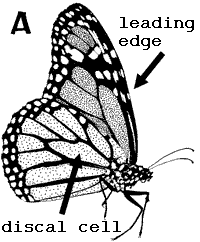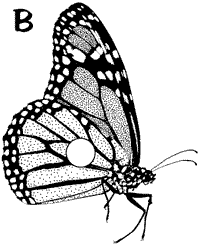The monarchs have been keeping me busy. In the last 4 days, 8 larvae have pupated. This morning was number #34. Its last skin is still attached to the top of the chrysalis.
I'm not sure why they all want to attach to the same area of the castle. It's getting rather crowded there and I have 5 more j-cats in the area as well. They will likely pupate in the next day or so.
#11 eclosed yesterday around noon and I released it at about 6pm. It was a female. I now have 19 pupae (15 in the castle), 5 j-cats and about 30 larvae in various instars.
I was reading a
Pelee Paradise Sanctuary Monarch Weigh Station #10275 post on Facebook and noted that monarchs also like to eat the seed pods. I tried a small, immature one in the castle and it wasn't touched at all. Yesterday I tossed in a ripe one and see this morning that it has become quite popular with at least a couple of larvae. I will be looking for those now as they will last quite a bit longer than individual leaves.
Yes, there is a lot of poop in the castle. I do clean it out twice a day but the larvae are little eating machines and are constantly pooping.
It will be a few days before the next pupa ecloses - probably no sooner than August 12 - this Saturday. Then there will be a few each day.
From what I've read online, other people have noted that so far this has been an excellent year for raising monarchs. Basically, for our region, any butterflies released from the beginning of August onwards will be the generation that makes its way to Mexico for the winter.
I hope to remember to
order tags for them next year. It is a very good way of tracking the monarchs.
The tags are .9mm in diameter and are made from polypropyle with a non-toxic adhesive on the back.
"The tags are numbered specifically for each tagging season. The tagging method is quite simple - remove a tag from the backing, place it over the discal cell (the one that looks like a 'mitten')
and position the balls of your thumb and forefinger over the discal cells on both sides of the butterfly, press firmly for two seconds and release the butterfly after recording the tag number, release location and other information on the data sheet." The data is then entered on the Monarch Watch website.
If a butterfly is found with a tag, the 888 number can be called and the tag number and location can be reported. The distance travelled can then be easily determined based on the location of its initial release.
A few years back Skip and I attended a
butterfly marking and release event in Orchard Hill north of Port Hope. It was there I learned about tagging monarchs. In attendance was Don Davis, who holds a Guinness World Record for the longest (at that time) butterfly migration.
He also had a certificate from Monarch Watch recognizing the marking and recapture of one of his butterflies released from that spot (Garden Hill) that was found at El Rosario, Michoacán, México.
Sadly, the tags are most often found on dead monarchs but hopefully it is after they've mated and laid a bunch of eggs.
At this same event, we got to see several other species of larvae munching away on different leaves and forming different chrysalids. I haven't had a chance to attend another event like this but hope to again.





